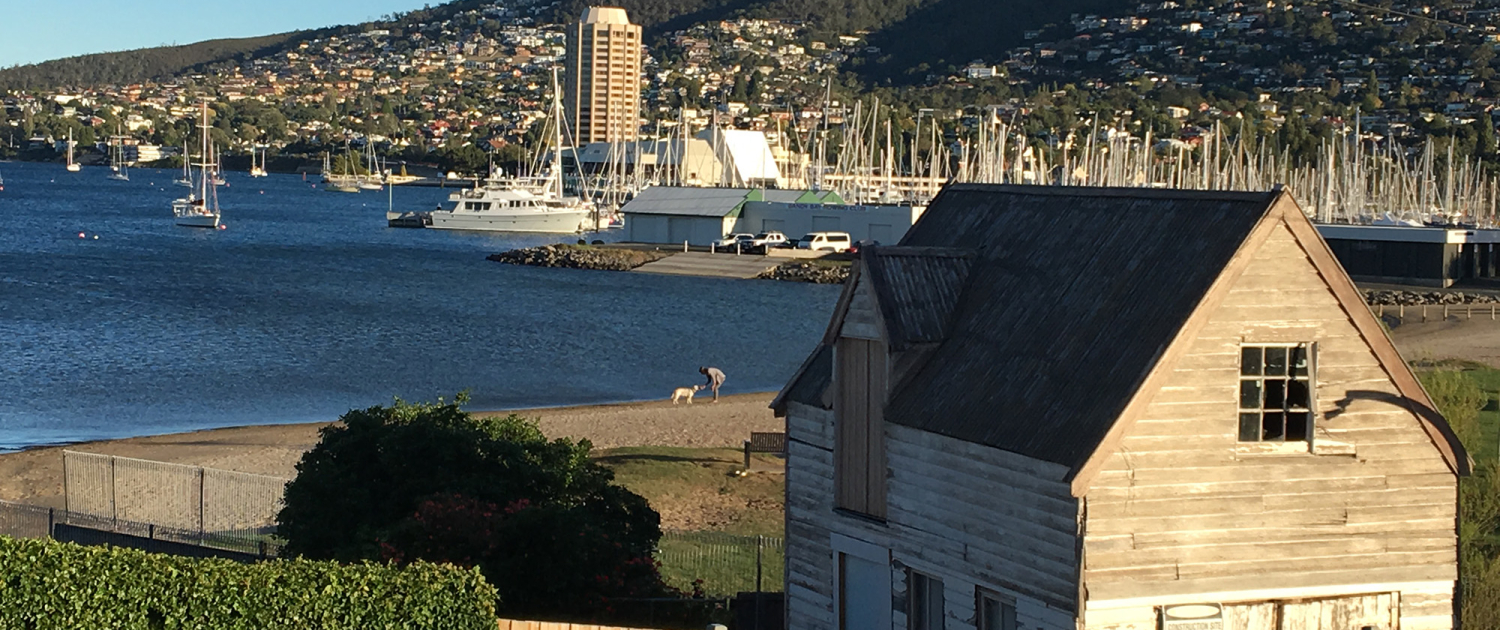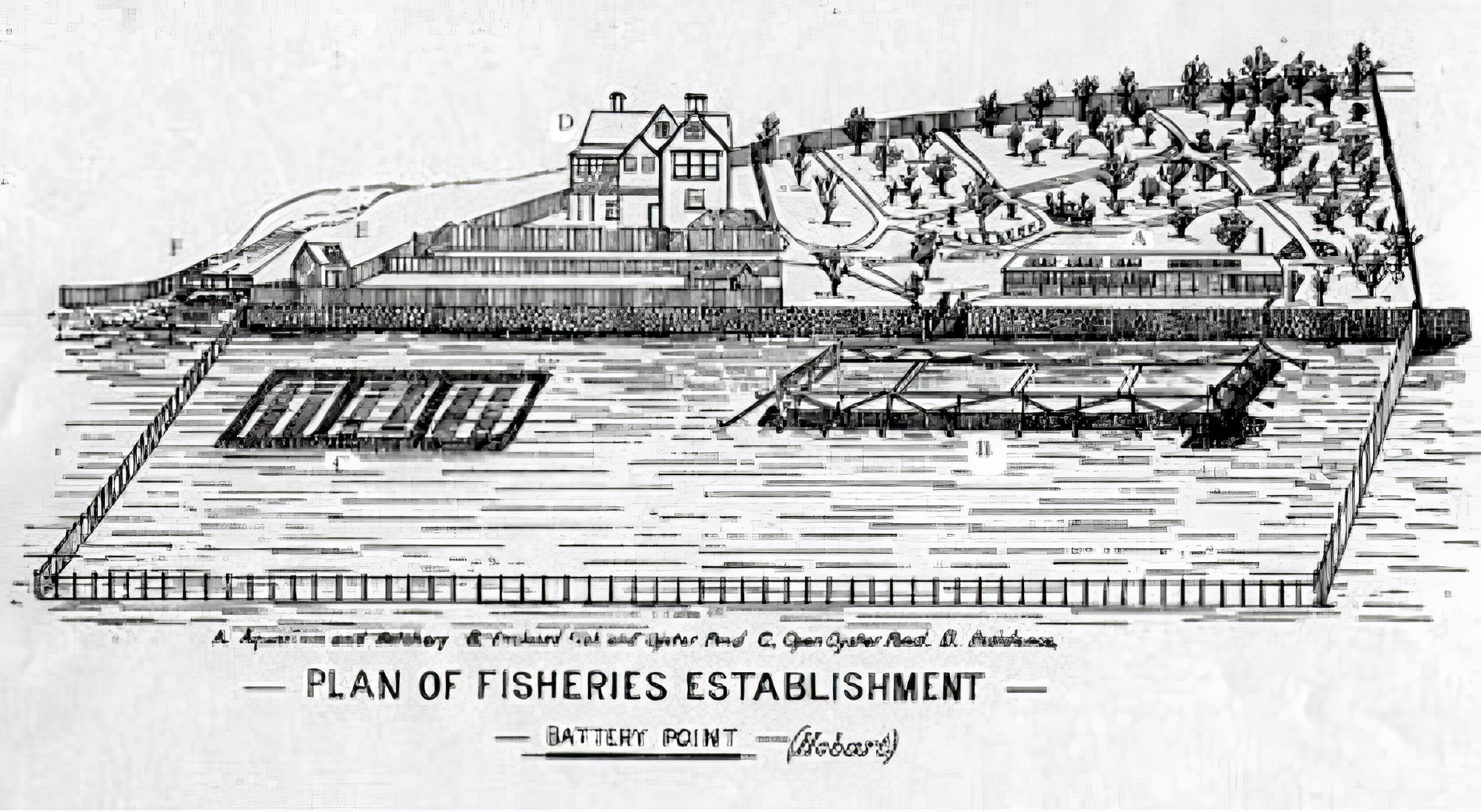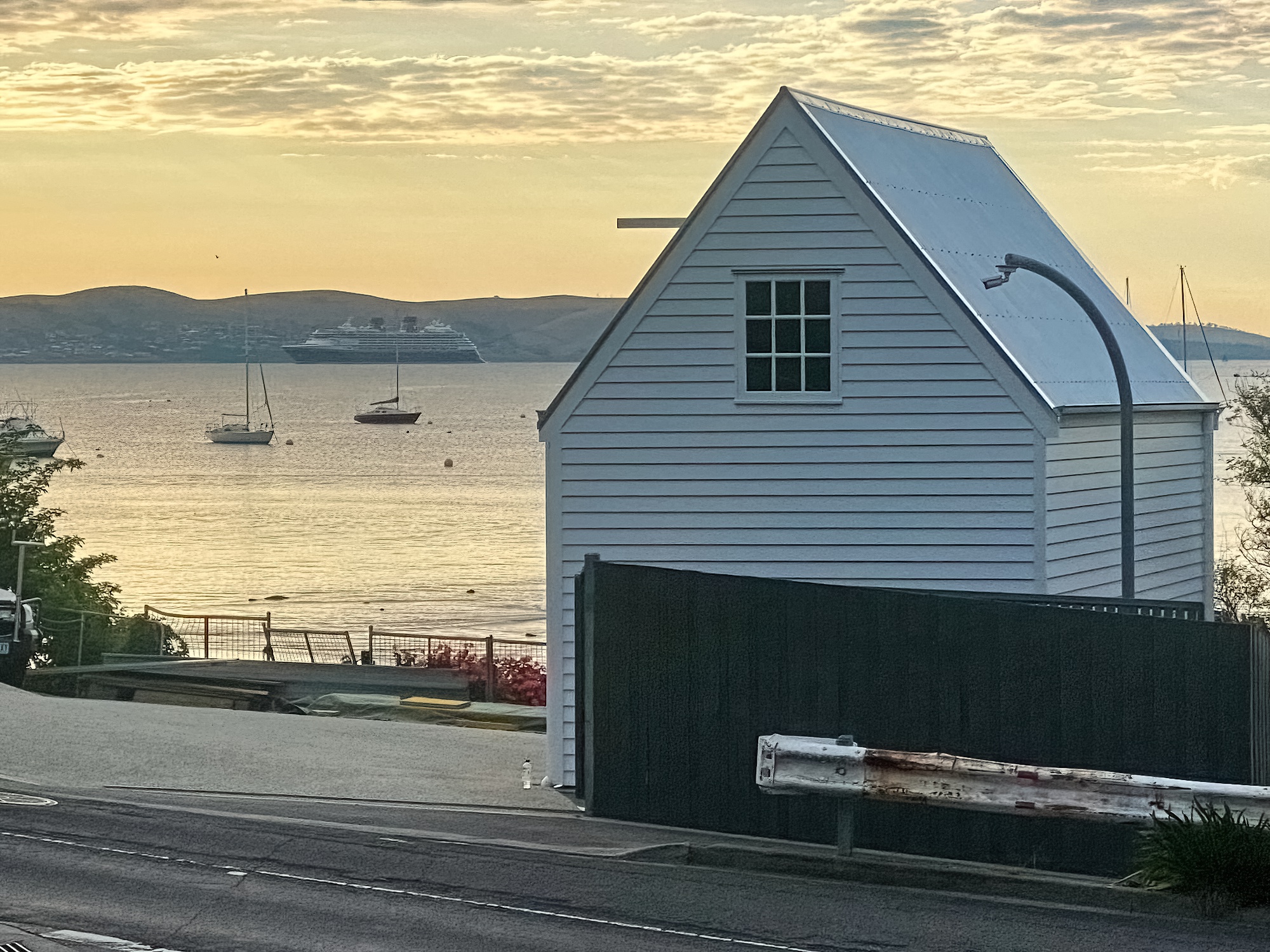Tasmania’s first fisheries centre
The small wooden building at the bottom of the steep hill in Napoleon Street is striking. Heritage-listed, its role in the history of Tasmania’s now booming aquaculture industry is not well known.
The small wooden building at the bottom of the steep hill in Napoleon Street is striking. Heritage-listed, its role in the history of Tasmania’s now booming aquaculture industry is not well known.

The shed is the only building remaining from Tasmania’s first fisheries research centre, established by William Saville-Kent, Tasmania’s first Superintendent and Inspector of Fisheries, in order to understand better the biology of oysters and fish. The saltwater hatchery and laboratory were recommended by Saville-Kent in 1884. The shed can be seen at the left hand side of the drawing below.
Originally in Gore Street, in 1885 the Government rented Captain Robertson’s house in Battery Point (now the location of a new dwelling at 76 Napoleon Street), with the development of the facility on the foreshore at the bottom of the garden. As well as the small wooden building, the facility consisted of an aquarium and tidal pools along with a bridge in the same location as the present bridge that crosses Sandy Bay Rivulet adjacent to the building. By June 1886, 14 marine species in addition to oysters were being cultivated in the facility.
Saville-Kent went on to set foundations for fisheries development in Australia: in Victoria, Queensland and Western Australia as well as Tasmania, and wrote two major books – The Great Barrier Reef and The Naturalist in Australia. More details can be found at the end of this page.

Following the closure of the research centre, the building’s use is not well documented. However, in the 1960s, it was used as a men’s shed for Vietnam veterans. At one stage, a replica spitfire aircraft was being constructed under its roof.
As well as being a building of historic significance, it has been an inspiration to artists.
The Association would like to thank Jock Young for permission to use extracts from his paintings of 76 Napoleon Street.
The simplicity of the wooden building at 76 Napoleon Street belies its historical significance. It is a building that deserves to be treasured.
Recognising this, in 2023 and 2024, the current owners, Jan and Lloyd Clark, embarked on an ambitious and very difficult restoration.
The building was in an extremely precarious state. Its structure had deteriorated badly, almost to the point of falling down. Traditional crafts were required to restore the building and preserve its legacy as a historical artefact of importance to Battery Point and to Tasmania. Thanks to the impressive skills of Dillon Builders, a labour of love led by Louise and Chris, it has been faithfully restored, incorporating profiles of the original timber cladding.
The video, photos and before & after slider below capture the enormous effort undertaken to complete this complex project.
The old fisheries centre now sits beautifully in its environment and is one of the suburb’s most significant buildings.

At an unknown time before 2021 a website was created, probably by the historian and scientist Anthony James Harrison (1939 – 2023), containing information on the history of fisheries research in Tasmania and on one of its important early researchers, Theodore Flynn (1883 – 1968).
Unfortunately, this website is no longer available. In the interests of preserving this significant historical information, the Association has included PDF versions of the website below.
Police, Ambulance & Fire
000
Hobart City Council Bus. hours
6238 2711
Hobart City Council After Hours
6278 0200
After hours doctor
1800 225 584
Mental Health Services Hotline
1800 332 388
Lifeline
13 11 14
Your file has been uploaded
